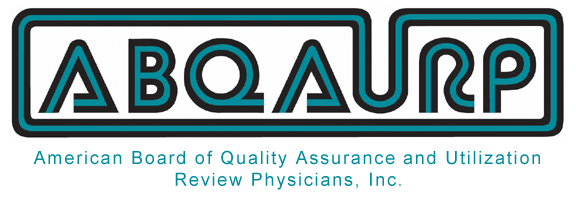|
Background: Hyperbaric Oxygen Therapy (HBOT) is well established as an adjunctive treatment in burn patients (Annals of Plastic Surgery, 1978). Plastic and reconstructive surgery patients undergoing chemical peel and laser skin resurfacing receive an iatrogenic injury similar to that sustained by burn victims. Laser resurfacing patients have wound edema and erythema that may persist for weeks to months and delays the return of the patient to normal activities of life. We hypothesized that early and aggressive use of HBOT to these patients could shorten the recovery period as measured by intensity and duration of erythema.
Methods: Patients undergoing laser dermabrasion were given HBOT at 2.4 ATA for 90 minutes beginning the first postoperative day and daily for 6 to 10 consecutive days and were followed clinically by their operating surgeons. Results: To date 12 patients have been studied. 11 patients were female, and 1 was male. Age range 45 to 66 years. 11 patients had never had previous laser or chemical peel surgery, and 1 had previously undergone similar surgery without HBOT. All 12 patients tolerated the HBOT well and no complications occurred. All 12 patients appeared to have diminished intensity and duration of erythema. Conclusions: This preliminary study suggests that HBOT administered post operatively to laser skin resurfacing patients is well tolerated and may shorten the intensity and duration of erythema. Further studies are indicated. HBOT can speed up healing in patients undergoing face lifts, skin resurfacing with laser or chemical peels, tummy tucks, breast reduction and enlargement surgery and many more conditions. We have found that HBOT shortens the recuperation time by 33% to 50%, reduces swelling and pain and may improve the results. Patients come to our facility to use our hyperbaric oxygen treatment in conjunction with their cosmetic surgery. Migraine headaches can be debilitating. Research at the University of Pittsburgh published in the journal Headache found that 90% of migraine patients experienced virtually complete relief of pain when treated acutely with HBO
A debilitating nervous system disease, multiple sclerosis results in localized patches of inflammation in the brain and spinal cord, which may eventually scar. In 1983, a controlled, double-blind study reported a beneficial effect of hyperbaric oxygen therapy (New England Journal of Medicine). Another 10,000 patients have received HBO treatment in England. In most, an initial intensive course has been followed by intermittent maintenance treatment. 703 patients were followed for up to 13 years. Four hundred and sixty-four patients (66%) who completed the initial course continued with treatment for at least three years as they found that their condition was stabilized, or the previous rate of deterioration retarded. According to this study, about one maintenance treatment every two weeks over many years is required to appreciably arrest progression, and once weekly is even more effective. Another study in the Journal of Neurology, Neurosurgery, and Psychiatry, demonstrated a remarkable slowing of cerebellar function (coordination) deterioration in their report of 120 MS patients one year following hyperbaric oxygen treatment.
Lyme disease is a serious bacterial infection caused by a spirochete (like syphilis) and transmitted by a tick bite. Most people respond well to early treatment with antibiotics, but if the infection is under treated or misdiagnosed, it can become chronic and disabling. Antibiotic therapy alone, even IV therapy, does not always result in a cure. Hyperbaric oxygen therapy has shown impressive efficacy in helping treat Lyme disease. Patients breathe in 100% oxygen at an atmospheric pressure of 2.4, the level required to weaken and kill the Lyme spirochete. A 1997 study by William Fife, Ph.D. at the Texas A&M Hyperbaric Laboratory, and approved by the Texas A & M University Review Board, found that approximately 85 percent of the 66 patients treated improved markedly. All of the study’s participants were veterans of antibiotic therapy.
The term “cerebral palsy” describes children who experience brain trauma at birth. Hyperbaric oxygen therapy (HBO) can treat the underlying problem in children with cerebral palsy the damaged brain. A study of 26 children at Cornell University found that the therapy improved motor skills, attention, language, and play. For some, an increase in vision was noted. In follow up interviews over 6 months, the improvement in attention, language and play remained. According to Dr. Maureen Packard, who conducted the study, “This increase in attention is particularly important for children must be aware their environment in order to learn. This represents a direct impact on cognitive functioning. The main differences between HBOT and traditional therapies are the rapid gains over time: and the impact on cognitive skills which, in general, are not improved by PT, TO, and speech therapies.”
After brain trauma from an accident, brain cells die from lack of oxygen. It is thought that many of these cells can be revived through hyperbaric oxygen therapy. A 1975 clinical trial of 99 patients with brain trauma in the mid-brain found that HBO therapy decreased mortality by 40%. A 1990 Study by Richard Neubauer, M.D., found that neurons can be reactivated up to 14 years after a traumatic injury. Specialized brain imaging found increased metabolic activity after even just one session of HBO.
There are 1.7 million stroke survivors in this country: survivors who often suffer devastating consequences such as paralysis, a life in a wheelchair, impairments in speech and thought. Since the early 1970 s, scientific journals have reported over 1,000 cases demonstrating a 40-100% rate of improvement for stroke patients treated with HBO. In the journal Stroke, Dr. Richard Neubauer reported outstanding results in a group of 122 stroke patients treated with HBO. Virtually all stroke patients in West Germany receive a three-week intensive course of hyperbaric oxygen paid for by insurance companies.
Reconstructing complex wounds is accomplished by shifting or transferring tissues to the wound from a different part of the body. A “skin graft” is the transfer of a portion of the skin (without its blood supply) to a wound. A “flap” consists of one or more tissue components including skin, deeper tissues, muscle and bone. Flaps are transferred with either their own, original blood supply (pedicle flap) or with detached blood vessels which are attached at the site of the wound (free flap). Skin grafts survive as oxygen and nutrients diffuse into them from the underlying wound bed. Long-term survival depends on a new blood supply forming from the wound to the graft. When the wound bed does not have enough oxygen supplied to it, the skin graft will at least partially fail. Common causes for this are previous radiation to the wound area, diabetes mellitus, and certain infections. In these situations, the availability of oxygen in the wound bed can be increased with hyperbaric oxygen therapy (HBO2) in preparation for skin grafting.
Additionally, HBO2 can be used after skin grafting to increase the amount of the graft that will survive in these compromised settings. Flaps also require oxygen and nutrients to survive. The outer, visible portion (usually skin) is furthest from the source of blood supply for the flap. This is the area most likely to be compromised by inadequate oxygen. Factors such as age, nutritional status, smoking, and previous radiation result in an unpredictable pattern of blood flow to the skin. If a flap is found to have less than adequate oxygen after it has been transferred, HBO2 can help minimize the amount of tissue which does not survive and also reduce the need for repeat flap procedures. Partial or complete failure of the wound reconstruction is very difficult for a patient and also very expensive. HBO2 can help by assisting in the preparation and salvage of skin grafts and compromised flaps. Crush injuries occur when body tissues are severely traumatized such as in motor vehicle accidents, falls, and gun shot wounds. These injuries frequently occur in the extremities. When crush injuries are severe, the rate of complications such as infection, nonhealing of fractures, and amputations range up to 50%. When used as an adjunct to orthopedic surgery and antibiotics, hyperbaric oxygen (HBO2) therapy shows promise as a way to decrease complications from severe crush injuries. HBO2 increases oxygen delivery to the injured tissues, reduces swelling and provides an improved environment for healing and fighting infection. Hyperbaric oxygen treatments should be started as soon after an injury as possible. They are usually continued for 5 to 6 days. A number of related conditions, including compartment syndromes, thermal burns, and threatened replantations are also benefited by hyperbaric oxygen, as discussed in other sections in this site.
A number of types of infections of soft tissue may benefit from adjunct treatment with hyperbaric oxygen and are included in the category of “necrotizing soft tissue infections.” Names of such clinical syndromes include crepitant anaerobic cellulitis, progressive bacterial gangrene, necrotizing fasciitis, and nonclostridial myonecrosis. Gas gangrene (Clostridial myositis and myonecrosis) is a separate entity and is reviewed elsewhere in this site. Necrotizing soft tissue infections may result from either a single strain or a mixed population of bacteria, typically occurring after trauma, surgery, and/or around foreign bodies. The individual affected by such infections is frequently compromised by conditions such as diabetes or vascular disease. In addition to preexisting host compromise, necrotizing soft tissue infections themselves may induce conditions adverse to control of the infection by normal host defense mechanisms. The infections commonly lower tissue oxygen levels, impairing the ability of the white blood cells (neutrophils) to fight infection. Toxins produced by bacteria involved may also inhibit neutrophil activity.
The primary treatments for necrotizing soft tissue infection are surgical excision of infected tissue and administration of appropriate antibiotics. In selected cases, addition of hyperbaric oxygen therapy may be both lifesaving and cost effective. Hyperbaric oxygen may be beneficial in several ways. Some of the bacteria involved in necrotizing soft tissue infections are “anaerobic,” growing most rapidly in a low oxygen environment. In the hyperbaric chamber, tissue oxygen levels may be raised sufficiently to inhibit bacterial growth. In addition, hyperbaric oxygen treatment may enhance the ability of neutrophils to kill bacteria, by a number of different mechanisms. The use of hyperbaric oxygen for treatment of necrotizing soft tissue infections should be individualized. In specific instances where risk of morbidity and mortality are high, adjunct hyperbaric oxygen therapy should be considered. |
Northern Nevada Hyperbarics Inc.
Center for Advanced Medicine - B 1500 E. Second St., Ste. 104 Reno, NV 89502 (775) 826-2084 Topics
|
Northern Nevada Hyperbarics Inc.
|






